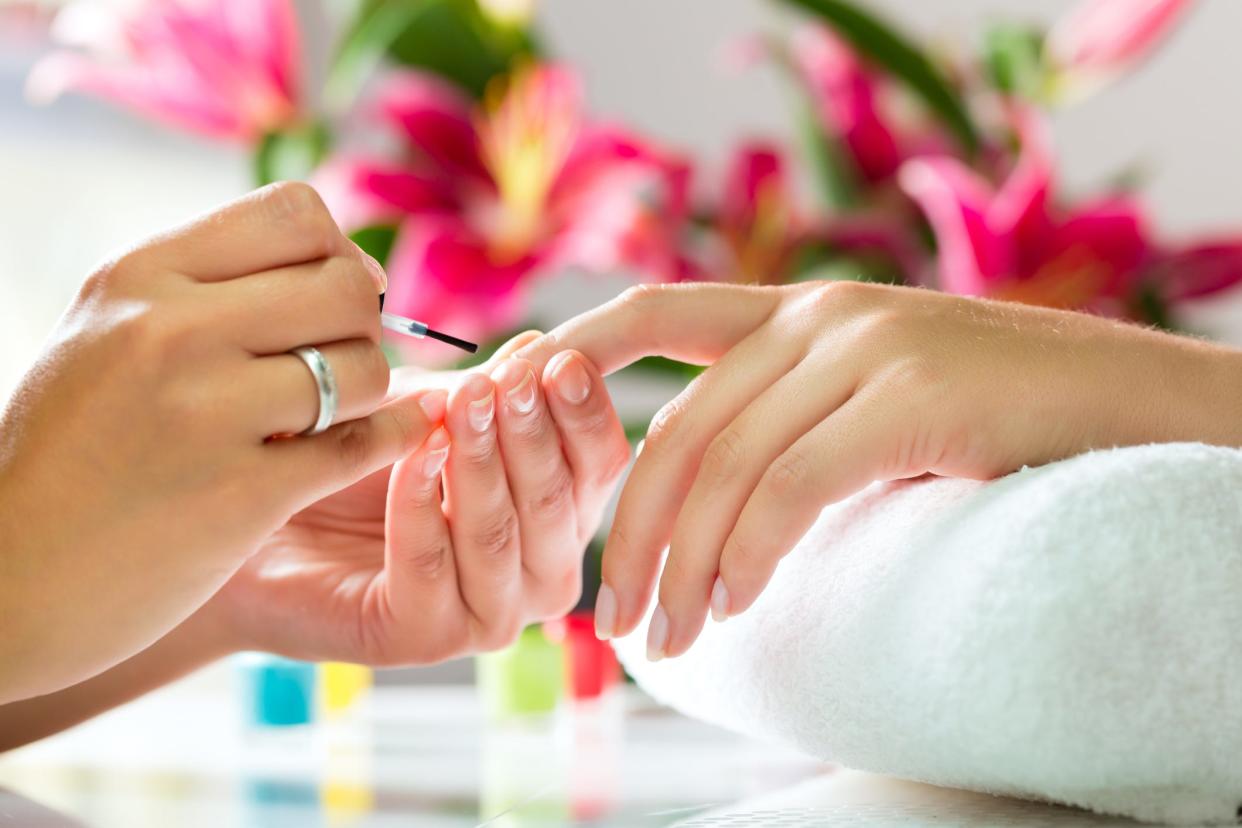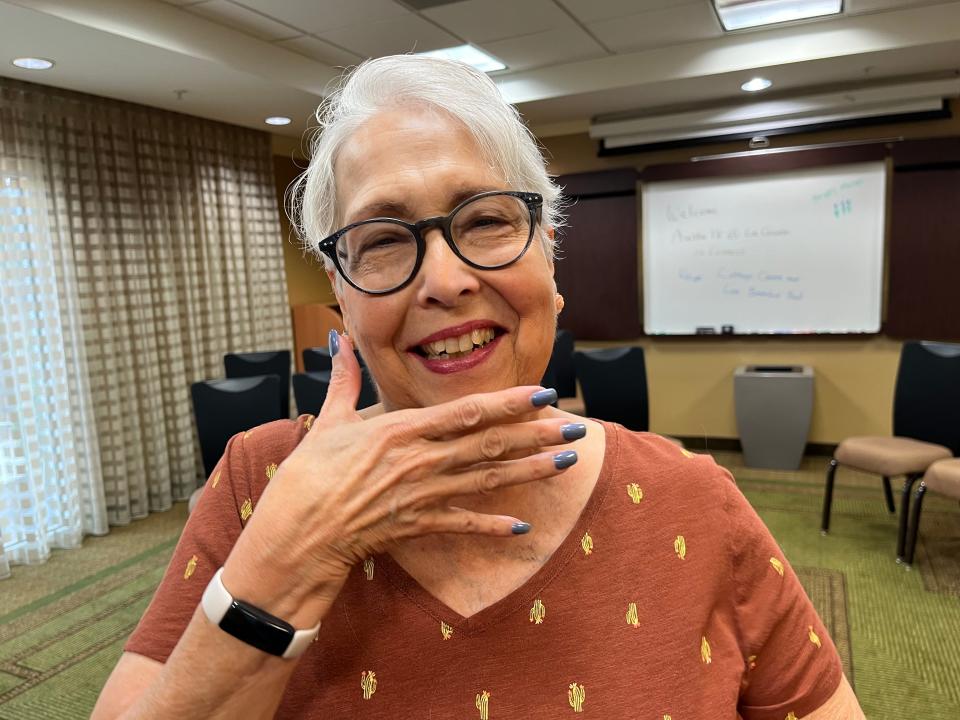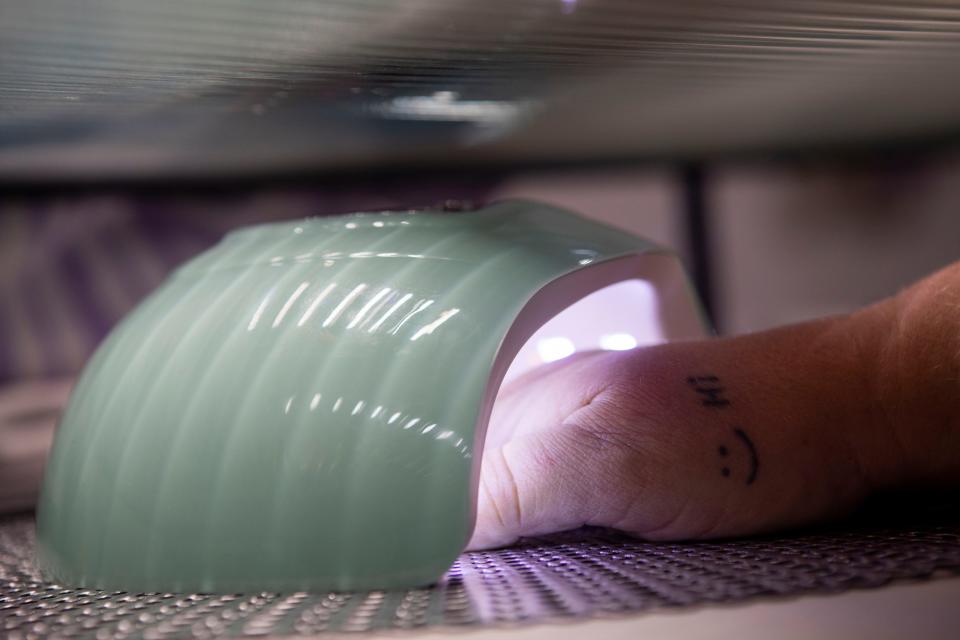Hey, Austin! Love a manicure? Limit your UV light exposure

Louise Langley enjoys having her nails done at least once a month, especially gel manicures.
"I love to get the gel," said Langley, 72, of Austin. "They don't break; they don't chip off; they look nice after they grow out."
Roseann Roberts, 62, used to go to the salon to get gel polish but now does it at home, complete with the UV dryer. Her kit came with fingerless gloves with SPF protection in them. She puts them on before doing her nails and while under the dryer.
"It's so convenient," she said. "I love having them done. They always look good."
In Austin, customers put their hands or feet under an ultraviolet light to dry their nails or toenails after a manicure or pedicure. So how safe is the UV light? A study published in January from researchers at the University of California San Diego examined these UV nail dryers, used to harden the polymers in gel polish, and the damage they could cause to the skin around the nails.

These nail dryers release 10 minutes of UVA radiation and are regulated by the Food and Drug Administration because of the radiation, though they were previously thought not to emit enough to cause damage. However, the researchers note that there have been a few recent cases of melanoma and other forms of skin cancer on the nail or the back of the hand.
The nail technicians are not beieved to be exposed to the UV radiation because no part of their bodies is underneath the lights.
In the study, human cells and mice cells were irradiated with the same kind of light as these nail dryers for 20 minutes at a time. The study then looked at changes in the DNA of those mice and human cells and compared them to the control group, which had not been exposed to the UVA light.

They found that 20 minutes of irradiation resulted in 20% to 30% cell death. Three 20-minute sessions contributed 65% to 70% cell death. They also found genetic mutations and changes in the DNA of the cells.
Acording to the study, "Radiation emitted by UV-nail polish dryers may cause cancers of the hand and ... UV-nail polish dryers, similar to tanning beds, may increase the risk of early-onset skin cancer."
The study was peer-reviewed and funded by grants from the National Institutes of Health.
Doing your skin checks: Winter is best time to check for skin cancer, Central Texas expert says. Here's why
What does this study really mean?
We asked Dr. Chad Hartmann of U.S. Dermatology Partners in Cedar Park to break it down for us.
The exposure, he said, is still relatively low, "but how many cigarettes is it safe to be exposed to?"
"With skin cancer and cancers in general, they are triggered by damage to the DNA, then the body makes a correction," he said.
That correction is the cancer. For some people, he said, it can be one cell with damaged DNA, and for others it takes a lot of damaged DNA before cancer appears.
Is it just nail dryers?
No, this kind of UVA light is used in some dental procedures to dry sealants or fillings, but that tends to be a very pinpointed exposure, Hartmann said.
This light is also used in tanning salons.
And you get UVA from sun exposure.
Is skin cancer the only risk?
Damage to the skin can also cause age spots and wrinkles, taking away from the beauty of the manicure and pedicure, Hartmann said.
Langley said she's tried other polishes that don't harden her nails as well as the gel. She plans to continue doing them.
Roberts said she will do so as well, though she'll continue to use the protective gloves.
"I have to watch for cancer just going outside," she said.
Protecting your skin: Skin dry and cracked? Could be our chaotic Central Texas winter weather
If you like a manicure or pedicure, what should you do?
There are things you can do to lessen the exposure:
Use a different kind of polish instead of the gel polish. Other polishes don't require the UVA light to harden. Some salons have gone to using a gel dip polish, rather than traditional gel, which doesn't require the UV dryer.
Wear specialized gloves that have UV protection built in. Cut the fingertips off while you're at the nail salon. That will help with the back of the hand skin cancer, but not what's found in the nail beds.
Before manicurists begin painting your fingers or toes, ask them to put on your hands or feet an SPF 50 or higher sunscreen with a physical barrier such as zinc or titanium dioxide.
Do your monthly at-home skin checks and annual skin check at a doctor's office to look for changes in the skin. Don't forget the hands and feet or the fingers and toes, including between them.
This article originally appeared on Austin American-Statesman: Study says UV nail dryers could cause skin cancer: What to know

